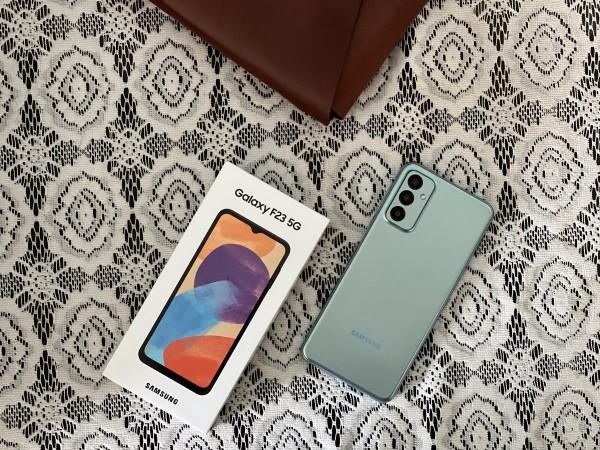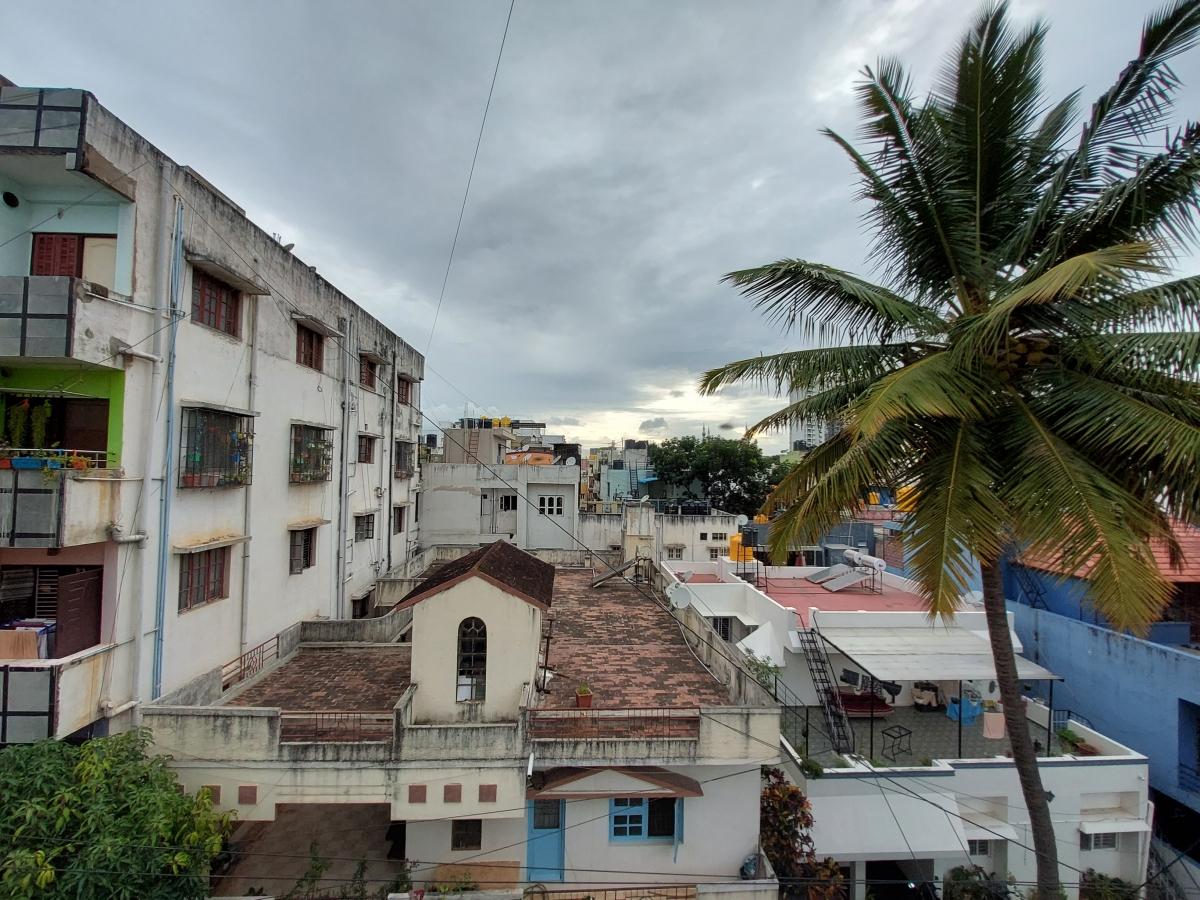Samsung's aggressive approach to reclaiming its dominating position in the Indian smartphone space is evident through the series of launches. The new smartphones take on the trend and appeal to the masses, both in terms of value for money and competitive specs. The Galaxy F23 is one of the recent additions to its celebrated F-series and aims to continue the streak.
Samsung Galaxy F23 is a mid-ranger, competing in the sub-Rs 20,000 price range. There are two configurations, 4GB+128GB and 6GB+128GB, priced at Rs 17,499 and Rs 18,499, respectively. Our review unit came with 6GB RAM in Aqua Blue shade. There are Copper Blush and Forest Green hues to choose from as well.
Design and display
Samsung has gotten more comfortable with designs in the affordable segment, offering a premium touch and durability. At first glance, the handset has an appealing factor, and despite offering an all-plastic body, the build quality doesn't feel cheap. The triple rear camera setup is much aligned with the rear panel and doesn't protrude much.

The phone has physical buttons on the right and the power button doubles as a fingerprint scanner, which works effortlessly if you can train your muscle memory.

The F23 is one of the few phones that still offer a 3.5mm jack, which is not surprising given the price range it is in. The USB Type-C port and the speaker are placed at the bottom.

The overall in-hand feel of the device is comfortable and light, making it easy to use for extended periods of time. The phone, however, lacks an official IP rating, but the display is protected by Gorilla Glass 5.

Speaking of, Samsung Galaxy F23 gets a 6.6-inch LCD display, which comes as a surprise. Given that displays are usually the biggest USP in Samsung phones, the TFT LCD panel on the F23 is a disappointing move. However, in the real-world use case, we didn't find any major issues with the display. The 120Hz refresh rate surely made things smoother and there weren't any issues with touch or response. But if you compare the panel against an AMOLED one, the colours may seem washed out. The blacks aren't as black as they would be in an AMOLED display and the colours naturally don't match.

But there were no issues streaming multimedia content on the phone as we could stream movies, and TV shows on OTT with ample visibility. The screen gets reflective under direct light, but nothing you cannot fix by adjusting the brightness.

Camera
Samsung Galaxy F23 comes with a 50MP ISOCELL JN1 sensor paired with 8MP ultra-wide lens and a 2MP macro sensor. On the front, there's an 8MP snapper for your selfies and video conferencing.
The primary sensor on the F23 is literally the star of the show. It captures great shots with vibrant colours and a wide dynamic range. We liked how the focus worked on this device with little effort. Under well-lit scenes, the images retained maximum details and kept the shadows dark. There are fun filters for you to try out as well, which worked seamlessly during our tests.

The second sensor is ultra-wide, which works as intended. It managed to capture decent shots, despite losing some details and dynamic range. The colours remained bright and natural in daylight shots, which is quite impressive for a smartphone in this price range.
The phone is also capable of capturing good portraits, offering accurate levels of bokeh and edge detection. Finally, the macro sensor also worked well, even though we had little expectations given the tiny 2MP sensor.
As the light fades, the smartphone tends to lose its charm. The F23 is not ideal for low-light shots as they picked noise and the colours lost their true tones. We noticed an inconsistency in results shot in low light as ambient light varied.
Check out some samples below:
Performance
Samsung Galaxy F23 is powered by Qualcomm Snapdragon 750G chipset, which managed our daily tasks well. The 6GB onboard RAM meant the multi-tasking was done without lags. Although, given the mid-range specs, we did notice the apps would take longer to launch the first time. We liked how the phone supports 12 bands of 5G, which should add some sense of security. Moreover, there's an option to extend RAM using the RAM Plus feature, which we guess should come in handy after a year's worth of use.

The phone is not designed for graphics-intense games, as it can drop frames and encounter lags. But we noticed the phone manages heat well. But if you set the graphics to medium, it should manage games like BGMI and Asphalt 9 well. There were no instances of heating during our testing or daily usage.

Samsung Galaxy F23 runs Android 12-based OneUI 4.1. There's little to complain about the software as it has been refined so well over the years. Less bloatware, high customisation options and zero lags make the interfacing experience smooth.
Battery
The F23 is powered by a 5,000mAh battery, which is a generous offering. Let's point out here that the phone doesn't feel like it's packing such a huge battery. Except for the 120Hz refresh rate panel, everything else works in favour of the battery, which keeps the phone running for a good day and then some. That includes internet browsing, IMs, voice calls, social networking apps, camera usage and playing some videos.
With heavy usage, like binge-watching shows or playing games extensively, the battery is likely to drain sooner. But as per our heavy usage, the phone didn't die on us until late evening - well in time to be home and plug it for a charge.

By the packaging of the phone, it's clear the phone doesn't pack an adaptor, which is disappointing in this price range. Buyers need to pay for that 25W charger or struggle with super-slow charging using some old 10W charger. Even though we had a compatible adaptor, the phone isn't the fastest charging one. It takes over 1.5 hours to fully charge the phone. It can be a test of your patience if you've used anything faster.
Verdict
Samsung Galaxy F23 is a well-rounded smartphone for its price. It has many things going its way, including a durable design, good cameras, reliable battery and trusted performance. Strong software and 12 5G bands are major plus points too, especially in this price range.
But there are some cons we'd like to list, such as the slow charging and the decision to not include the adaptor in the box. The low-light photography could have been better and the AMOLED panel clearly would've made the experience better.




































